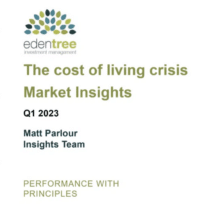If inflation is now structural, investors need well run income paying funds, says David Jane, Premier Miton Macro Thematic Multi Asset Team
Inflation is one of the single most important challenges facing portfolio managers. If inflation is a temporary, cyclical phenomenon, as a result of pent up demand and consumer support programmes during the lockdowns, then the old investment paradigms will reassert. However, if we have gone through a structural change, I believe portfolio construction needs to change.
The arguments in favour of temporary inflation surround the nature of the interventions which took place during lockdowns. Obviously, the closing of much of the global economy was a temporary measure, as were the income support measures which to some degree sustained demand during and after lockdowns. These disruptions are now settling down and working their way through the system. Income support measures are rolling off, supply chain disruptions are beginning to ease and consumer desire to get out and spend is abating. Indeed, the global economy appears to be heading for a contraction, which is inevitably disinflationary in the near term.
However, these deflationary trends need to be considered in the context of some more structural factors. Let’s start with the basic nature of the global economy. From the late 1980s until the last 5 or 10 years, the bulk of the world’s economy could be considered to be free market or moving in a more free market direction.
Recent trends, however, have been much more in the managed economy direction. A more top-down interventionist world is likely a more inflationary world.
An example of structural inflationary trends, is the interventionist energy policy that has aggressively been pursued in the west. Subsidies for renewables, combined with discouragement of fossil fuels and nuclear have given rise to higher inflation and lower productivity. The same can be said of the policies that have prevented investment in other heavy industries in the west. A lack of flexibility has been built into our economic systems as a consequence of policy, which ultimately has structurally increased inflation.
Now inflation has become an issue, I see governments the world over making the same mistakes as in previous inflationary periods. Inflation at its heart is too much demand (money) chasing too little supply. Yet nothing is being done to address the supply side of the problem. Interventions are taking place which support people’s incomes, thus boosting demand. This will only exacerbate inflationary pressures. However, these are the only politically acceptable interventions as long-term solutions are politically painful.
There are many other potentially inflationary factors at play in the world economy, including the retreat of globalisation, lack of investment in new mineral production, structurally increased transport costs due to regulation, and so on. We lean towards the higher for longer view on inflation for the coming years.
Need for a different approach?
If inflation is structural, investors, particularly those close to or post retirement may need to consider taking a different approach than the current norm. At present many investors, even those post retirement, are given a total return portfolio. The idea being that capital gains can be booked to provide cash income in retirement. There are two increasingly obvious problems with this approach.
Firstly, in a higher inflation environment growth as a strategy typically underperforms value and real assets. This exacerbates the potential problem with a drawdown strategy for income in retirement. In drawdown, investors who want a fixed monthly income must sell more units or shares of their investment when markets are weak and less when they are high. This is the reverse of pound cost averaging and can be a very damaging strategy. This can be especially damaging in more volatile markets.
The second problem is that in higher inflation periods, investors will also potentially need to draw a higher level of income from their portfolios and will face the same problem of having to sell more units or shares of their investment when markets are weak and less when they are high.
Much simpler is to use natural income strategies, receiving the income paid out from underlying holdings, for example from dividends, rather than chasing capital gains. You can also seek natural income strategies that focus on providing a growing income over time.
This may be a very good time to consider whether your retirement income propositions are well positioned to meet the needs of income-seeking investors in different types of investment and economic environments, including periods of higher inflation.
This article was first published in the October 2022 issue of Professional Paraplanner.
[Main image: owfiqu-barbhuiya-JhevWHCbVyw-unsplash]


































